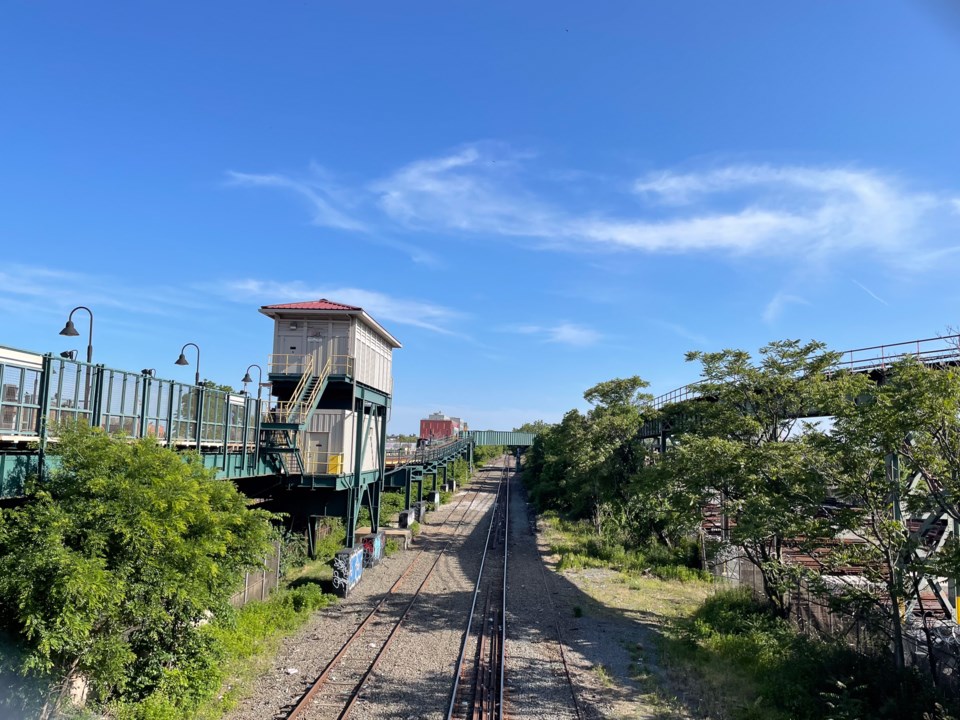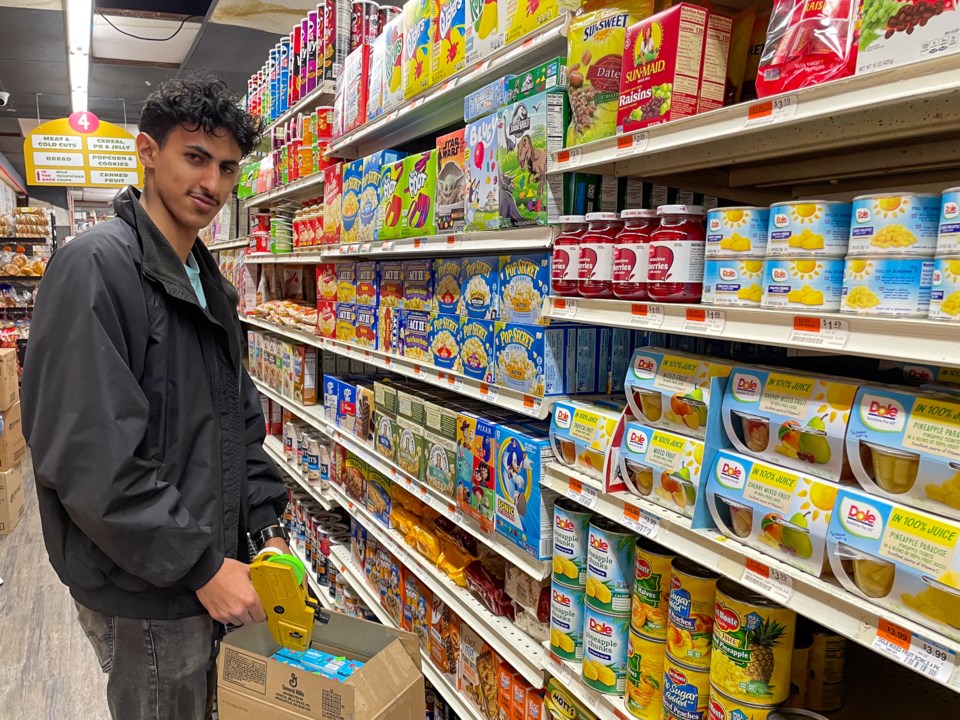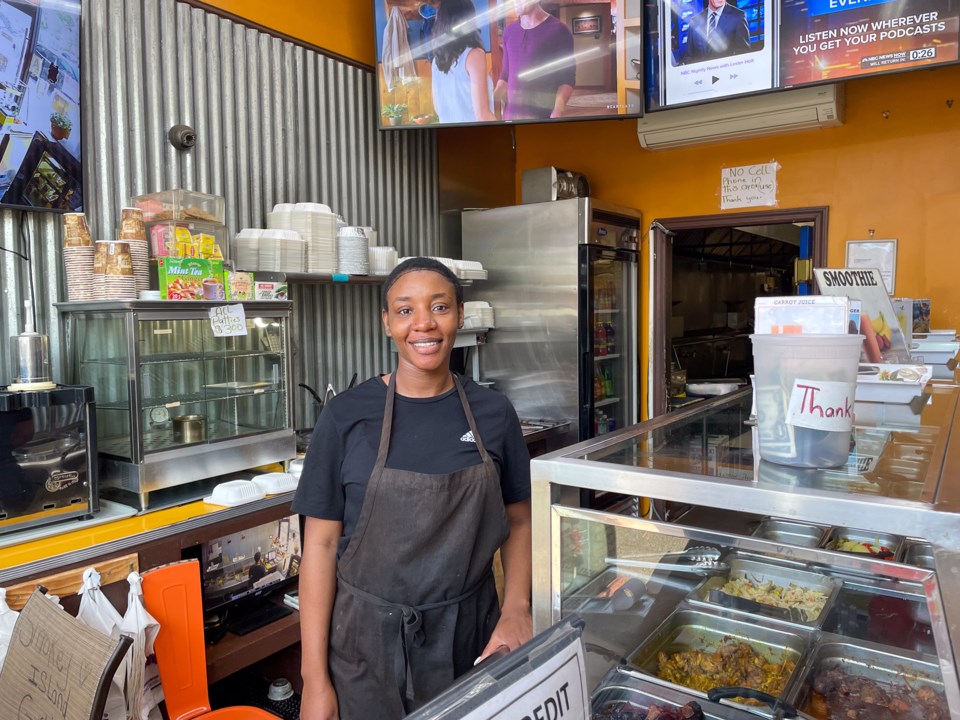It’s full steam ahead for the Interborough Express (IBX), a $5.5 billion transit line that promises to connect currently underserved areas of Brooklyn and Queens — and bring economic development to East New York and Brownsville.
In January, the Metropolitan Transit Authority announced it had completed a planning study and had decided to use light rail for the transit project, which will use an existing right of way currently only used by freight rail to connect Bay Ridge to Jackson Heights via Flatbush, Brownsville, East New York and Maspeth.
The project is currently in an environmental review process and, if approved, is slated to be part of the MTA’s 2025-2029 capital plan.

Supporters say the transit line will bring economic development to East New York and Brownsville and connect residents to job hubs and educational facilities with a rapid commute.
However, with the development of any new transit line comes the potential for gentrification as well as financial opportunity that some East New York and Brownsville residents said they don’t want to be shut out of.
International companies are already looking at how the Interborough Express would change East New York, and the opportunity it presents for developers and the community.
East New York and Brownsville’s local leaders — including Councilmember Charles Barron, who represents District 42, and Brooklyn Borough President Antonio Reynoso — want to make sure it is long-term residents and business owners who are the ones to truly benefit from those opportunities, including jobs, contracts and the mitigation of displacement as the area is developed. They say the time to start planning for that is right now.
What is the Interborough Express?
New York Gov. Kathy Hochul first announced plans to move forward with the Interborough Express as part of her 2022 State of the State, ordering an environmental review, which is currently underway.
If built, the MTA said it would carry approximately 115,000 passengers each weekday by 2045. With an estimated travel time of 39 minutes from Bay Ridge to Jackson Heights, the agency says the IBX would provide major time savings for riders, connecting neighborhoods with poor existing transit links to one another. Under the current plan, the line would also connect to up to 17 existing subway lines, including the 7, M, L, J, A, C, 3, 5, Q, F, D and R lines.
The MTA said the project would serve an area of New York City where almost three-quarters of the population are people of color and a third of households are below 150% of the poverty line and 50% of the households do not own a car.
The area adjacent to the IBX corridor is expected to add tens of thousands of new residents and jobs over the next 25 years, with the population in the area predicted to grow from 900,000 to reach 941,000 in 2045, MTA said.
“Along with its benefits for individual riders, the IBX would enhance entire neighborhoods and strengthen Brooklyn and Queens as a whole,” the agency said in a January report, noting it would connect job centers and educational institutions.
The MTA also said it would increase the chance of success of The East New York Neighborhood Plan, which encourages major commercial development and economic investment, complementing the industrial and manufacturing uses within the East New York Industrial Business Zone (IBZ). Construction of the IBX is estimated to cost $5.54 billion dollars if built in 2027.
State Sen. Roxanne Persaud, who represents the 19th district, told BK Reader the project would be transformational, providing much-needed transportation options for “increasingly populated and historically disadvantaged neighborhoods that are transit deserts.”
At the same time, Barron and other local leaders have expressed concern that the Brownsville and East New York communities could be left out of the planning process, leading to outsiders cashing in on opportunities more than long-term residents.
Opportunities for Small Businesses
In terms of commerce along the line, the IBX has the potential to connect Brownsville and East New York small businesses to a new swath of customers in Queens, a prospect about which many in the area were optimistic.
BK Reader walked the length of the route through East New York and Brownsville one recent weekend to speak with business owners on the transit line. While most business owners and residents had not heard of the project, many thought it would be a good idea both for residents to get around faster, and to open up their potential customer base.
From behind tinted glass, Scott of Aliyah’s Gold Exchange, said he thought the project would be good for everyone.
“It will bring more traffic into the area,” Scott said. The gold shop had been there for 13 years and is a stone’s throw from where the IBX would run.
Ali Hasson is the 20-year-old owner and manager of 777 Food Corp Supermarket, one of a handful of supermarkets in the surrounding blocks. He said he hadn’t heard of the Interborough Express, but being that the project was likely a decade away, he was much more interested in the development right in front of him.

He said there were 300 apartments going up around the corner, which was going to be a boon for his business.
“It’s good, it’s a lot of people. And there’s no competition, no other stores around me," Hasson said.
Regina Lawrence, a local resident and food server at Little Trelawny Jamaican Restaurant & Grill, also hadn’t heard of the project, although she felt it would be a good idea, as she knew from first-hand experience the long and “hectic” commute to get to Queens.
“I don’t know why they didn’t do it before,” she said.

Meanwhile, at the new — and packed — Bike Shop across the street, Gurmukh and Darvinder Singh were excited to hear about the possible new transit line, with a stop right by their business. Gurmukh sat perched on a bike while looking at the MTA map of the potential route.
“Wow, that’s nice,” Gurmukh said, zooming in.
“It would be good for everyone,” he said. “If there is more transport, there’s more taxes, more revenue, more convenience for people to go to work.”
Would the business be there to benefit in 10 years?
“I hope,” Gurmukh laughed. “There’s no guarantee.”
Some Companies Already Looking Ahead
The potential of a new transit line has also caught the eye of some much larger companies, and conversations are underway in some circles about what the development could look like for the neighborhood.
International design and architecture company BDP is one of those. The company has designed multiple projects in the UK and Toronto that activate vacant lots prior to development with a concept known as “Meanwhile Use.”
Meanwhile Use refers to the short-term use of temporarily empty buildings or vacant lots to activate unused areas for communities prior to permanent builds.
“With the IBX currently under environmental review and poised for construction, East New York is primed for a new era of growth and development opportunity,” the company said.
However, like most transit initiatives, the construction of the IBX was likely to create a long period of disruption for the neighborhood.
It said Meanwhile Use can be used during the time between land acquisition and the start of construction to give developers the opportunity to engage with the community before permanent development, and potentially incorporate the temporary use into the final build if the developer is willing.
After opening a studio in NYC in 2022, BDP began looking at potential opportunities in the city. In January this year, the company released a 6-month case study it had completed on East New York and the IBX.
The case study pulled public data on East New York and points to crime rates, racial health disparities and increased poverty levels in the neighborhood.
BDP also spoke with East New York Restoration and United Community Centers to inform its research of what the community needs and wants, and proposed potential Meanwhile Use options such as parks or community gardens, food markets, exercise areas or summer play zones.
“As architects, in our experience, new transit creates immense development opportunity,” BDP Principal Jesse Klimitz said.
“When transit lines are proposed, it is creating the opportunity for buying of land, assembling land parcels and planning, and that can take anywhere from five to 10 to 15 years for that process to occur."
With the opportunity comes the potential for gentrification, Klimitz said. But, the company believes Meanwhile Use is one of the solutions to mitigating any negative impacts like displacement and disruption from new construction that a large transit line can bring to a community, he said.
“What I think is so rich, so valuable, here is that Meanwhile Use can actually serve as the process by which to inform the development community and bring the community along and to keep the foundations of the community there,” Klimitz said.
BDP Says Meanwhile Use is a ‘Win-Win’
BDP is now looking to partner with local developers and landowners in East New York to move to the next stage in planning Meanwhile Use projects now.
It says some of the commercial benefits of Meanwhile Use projects for developers include gathering rent from shops using the vacant spaces in the interim, through public grants or incentives, and by building trust with local communities.
This can help inform the planning process and also ease the passage of a development with more community buy-in, BDP New York Studio Head Rosalind Tsang told BK Reader.
“You can't separate community benefit and developer benefit,” Tsang said.
It can also help developers meet their commitments to Environmental and Social Governance, which will help them gain investment from ever-more socially-minded investors, Tsang said.
“For the community it’s also a big win because it's addressing immediate needs, it's enhancing safety in the community rather than having abandoned spaces or underutilized sites that don't have any activity on them," she said. "It's bringing people together and providing economic opportunity.”
Tsang acknowledged the skepticism that many East New Yorkers might have in dealing with developers or those outside of the community looking to come in and tell people what they need.
“If a developer just comes in and just slams something down, without community output, that's detrimental for the community,” she said.
“So [the community] engagement piece is really a critical piece of a development and why Meanwhile Use is also, we believe, a very important component of what a developer can do, to understand what might be of the highest benefit to the community.”
East New York Restoration and United Community Centers did not respond to requests for comment for this story.
In part two of this series, we'll get more insight into the challenges and opportunities of the IBX railway from community leaders and government officials working on the development and rollout of the project.



